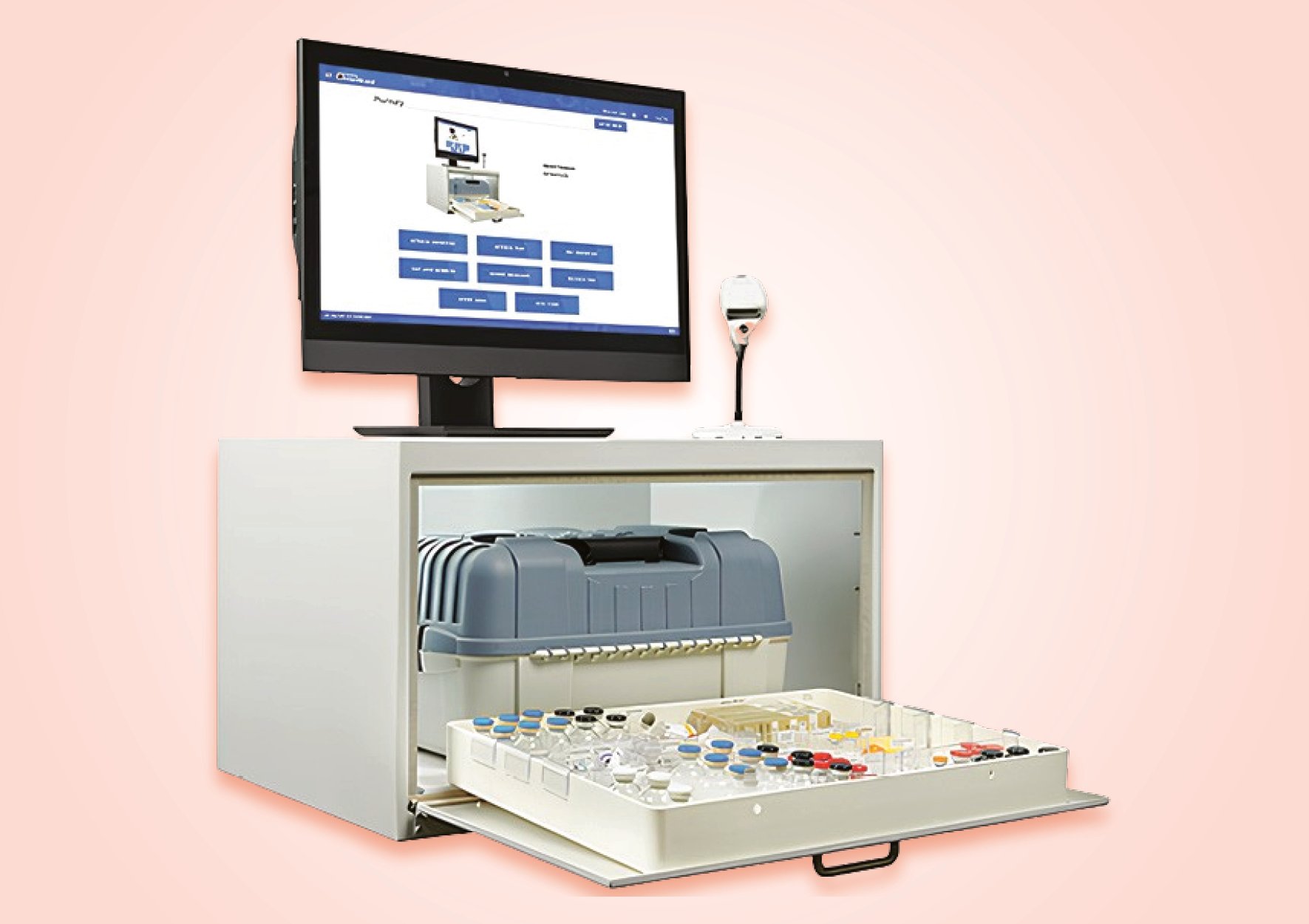- Show Menu
- Contact Us
- FAQs
- Reader Service
- Survey Data
- Survey Winners
- Testimonials
- Upcoming Events
- Webinars
- White Papers
An Update on the State of Drug Shortages

Q&A with Michelle Wheeler, PharmD,
and Rachael Freeman, PharmD, BCPS
University of Utah Health (UUH)
Pharmacy Purchasing & Products: What recent trends has the University of Utah Drug Information Service identified with drug shortages?
Michelle Wheeler, PharmD, and Rachael Freeman, PharmD, BCPS: Historically, generic injectable drugs represent at least half of new shortages, with all other dosage forms combined accounting for the remaining new shortages (see FIGURE 1). This changed unexpectedly in 2019, when sterile injectable products made up just 39% of new deficits. However, this change did not hold. In 2020, the trend reverted to sterile injectable products accounting for 50% once again.
While it is often unclear why shortages occur, in 2020 one reason is that drug shortages were impacted by the COVID-19 pandemic, despite avoiding supply disruptions related to COVID-19 illnesses amongst employees of drug manufacturing plants (see FIGURE 2). Development and eventual production of the COVID-19 vaccine led to new shortages of injectable products. FDA prioritized all relevant components (eg, vials and stoppers) be directed toward vaccine production, causing a supply disruption for any product that shared these components. Pfizer released a statement in early 2021 announcing anticipated shortages of Cleocin, Depo-Medrol, testosterone cypionate, and Depo-Testosterone. This is directly related to elements of these drugs being redirected to vaccine production. Companies not involved in vaccine development were impacted as well when they performed as contract manufacturers for development. One such example is the Horizon Therapeutics product, Tepezza, which went on shortage after a contract manufacturer, Catalent, became involved with production of the COVID-19 vaccine.
In early 2021, natural disasters again affected drug shortages. Unusually cold temperatures and winter storms across the American south created shipping delays, which eventually led to brief shortages of critical products. Unfortunately, natural disasters will continue to play a role in drug shortages, as the just-in-time supply chain is significantly impacted by these types of events.
PP&P: Are there specific drug classes that persist in shortage?
Wheeler & Freeman: The top shortage classes remain central nervous system drugs, cardiovascular drugs, antimicrobials, chemotherapy drugs, and hormonal agents (see FIGURE 3). There was no change in the top classes over the past year, even amid the COVID-19 pandemic, since these drugs were vital to the treatment of patients with severe infections. Shortages of propofol, lidocaine, and bupivacaine proved to be among the most stubborn. The underlying issues that keep these drugs on shortage, such as a limited number of generic suppliers, also make them vulnerable to fluctuations in demand.
PP&P: What are the overall trends in drug shortages?
Wheeler & Freeman: In the past year, there have been fewer new drug shortages (see FIGURE 4). In fact, there were only 129 shortages in 2020—the lowest amount seen in over a decade. However, drugs with persistent deficits have been slower to resolve than in the past. The overall trends remained the same.
Surprisingly, stockpiling of COVID-19 therapies did not occur on a broad scale. Several factors may explain this lack of hoarding. The first possible reason is that recommended therapies for COVID-19 illness changed frequently. Initially, hydroxychloroquine saw moderate shortfalls partially related to increased demand. Once recommendations pivoted away from using hydroxychloroquine, the shortage eased. Another reason stockpiling did not predominate may be due to the fluctuating nature of state-wide infection rates. States were impacted by surging infection rates at separate times. Fortunately, statewide rates of infection and subsequent hospitalizations never aligned on a national level. This created fluctuating pockets of demand rather than a larger scale situation.
PP&P: What regulatory efforts have been implemented to address the problem of drug shortages?
Wheeler & Freeman: In April 2020, FDA released a statement on their efforts to address drug shortages during the COVID-19 pandemic. Their efforts included monitoring the national supply chain and providing information on in-use times to aid in patient access for drugs that require compounding or other preparation prior to administration within health care facilities.1,2
In addition to the COVID-19 response, FDA also published a list of 223 essential medications and their critical manufacturing inputs with the goal of promoting domestic production of the items on this list.3 The list focused on medications needed for treatment within acute care medical facilities for urgent indications. The creation of this list may lead to targeted efforts in securing the drug supply chain.
We discussed Senate Bill 2723 in our last drug update (see https://tinyurl.com/k4bu2s8c). If this proposed legislation passes, it would serve to hold manufacturers accountable for maintaining the availability of medications and disclosing the reasons for drug shortages. It also grants expanded inspection powers to FDA, addresses shortages as a national security issue, and allows for the development of incentive programs for domestic production of pharmaceutical products.
In February 2020, 14 interdisciplinary health care associations wrote a letter advocating for the advancement of the bill to senators Lamar Alexander (R-Tenn) and Patty Murray (D-Wash). The letter focused on the United States’ overreliance on foreign manufacturing and vulnerability in the face of natural disasters and disease outbreaks. The authors also stressed the importance of transparency in active pharmaceutical ingredient sourcing and risks to the supply chain under the current system. Overall, this letter demonstrated the vested interest all health care professions have in ending drug shortages.
As of May 2020, Senate Bill 2723 has not yet been passed. The status of this bill can be tracked at: http://www.congress.gov/bill/116th-congress/senate-bill/2723. It will be interesting to see what the future holds for this legislation, and the impact it may have on preventing these shortages in the future.
References
- U.S. Food & Drug Administration. Drug Shortages Response | COVID-19. Updated August 4, 2020. Accessed May 12, 2021. https://www.fda.gov/drugs/coronavirus-covid-19-drugs/drug-shortages-response-covid-19.
- U.S. Food & Drug Administration. Information for Health Care Facilities and Providers on “in-use time” | COVID-19. Updated August 4, 2020. Accessed May 12, 2021. https://www.fda.gov/drugs/coronavirus-covid-19-drugs/information-health-care-facilities-and-providers-use-time-covid-19.
- U.S. Food & Drug Administration. FDA Publishes List of Essential Medicines, Medical Countermeasures, Critical Inputs Required by Executive Order. Updated November 9, 2020. Accessed May 12, 2021. https://www.fda.gov/news-events/press-announcements/fda-publishes-list-essential-medicines-medical-countermeasures-critical-inputs-required-executive.
Rachael Freeman, PharmD, BCPS, is a clinical pharmacist in adult inpatient internal medicine. She graduated from the University of Illinois Chicago College of Pharmacy. Rachael completed her PGY1 pharmacy residency and PGY2 drug information residency at University of Utah Health.
Michelle Wheeler, PharmD, is a drug information specialist at the drug information service at University of Utah Health (UUH). She received her PharmD at the University of California, San Francisco, where she also completed a PGY1 residency and a specialized residency in pharmacokinetics. Michelle has previously served as a clinical pharmacist and helped to create the inpatient thrombosis service at UUH. Her areas of professional interest include drug information, drug shortage management, and anticoagulation.
FOR MORE INFO ON
DRUG SHORTAGES
The Current State of Drug Shortages
By Michelle Wheeler, PharmD and Rachael Freeman, PharmD, BCPS
A Comprehensive Approach to Manage Drug Shortages
By Robert D’Eramo, PharmD; Kate Bidwell Horton, PharmD, BCPS; Stacey B. Pattie, PharmD, BCPS; Danielle A. Griggs, PharmD, MBA, MS, BCPS
Formulary Management of Novel Drug Therapies
By Danielle A. Griggs, PharmD, MBA, MS, BCPS, and Kaylyn Dougherty, PharmD, MHIIM
Like what you've read? Please log in or create a free account to enjoy more of what www.pppmag.com has to offer.












